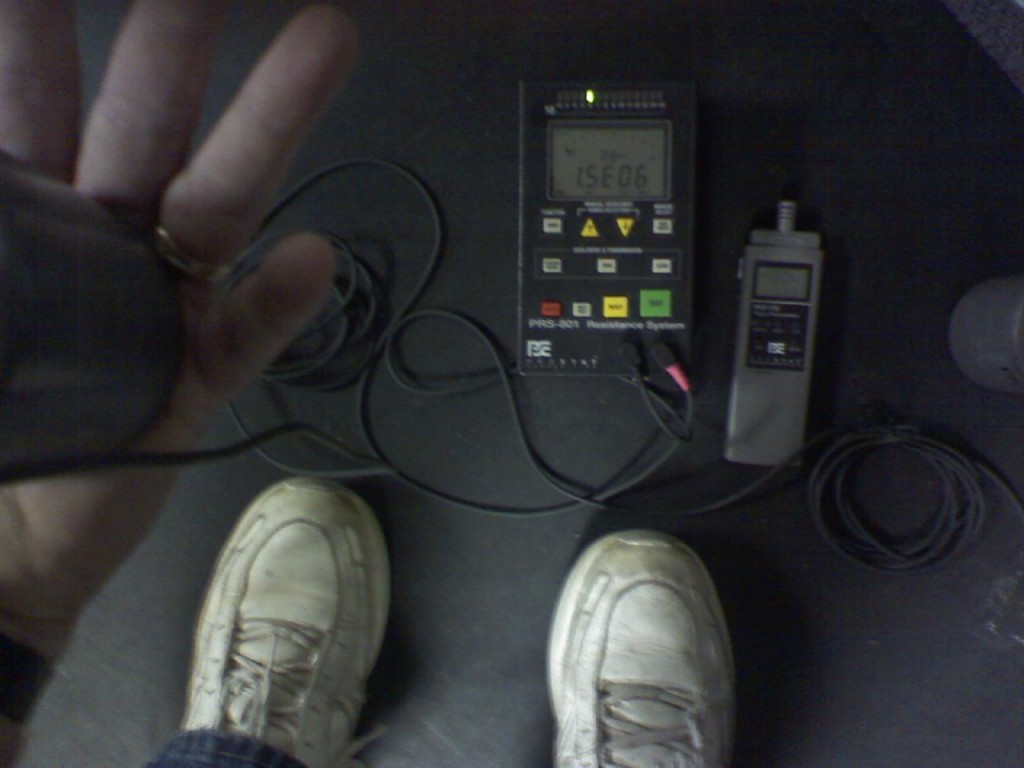Conductive, Dissipative, or Anti-Static Flooring?

You’re hard at work at your latest assignment. Your boss wants you to put together a complete plan for creating a large-scale electrostatic protection area (EPA) for a client who will be assembling various sensitive electronics and they want to avoid any risk of losing their investment due to electrostatic discharge (ESD).
You’ve selected the grounding cables, the workstations, the custom cut matting, containers and furniture, all designed to minimize or eliminate the slightest chance of ESD damage. But a curious thing happens when you research the proper flooring.
A simple Internet search for ESD flooring yields numerous options, more than you expect and you start to notice they all fall under 3 categories. In an instant, you’re faced with a decision, just like the game show, “Let’s Make a Deal.”
Suddenly, Monty Hall (or Wayne Brady, the current host!) is staring at you, asking do you want to choose door number one, number two, or number three: conductive, dissipative, or anti-static? The clock is ticking… How do you decide?
Door #1
For starters, let’s eliminate one of your options. Much like the ‘ZONKS’ of the game show, ‘anti-static’ is a worthless term in your ESD vocabulary. By strict definition, anti-static refers to a material that resists generating a charge. At one time it did designate a level of resistance, but was so overused and misunderstood, the term was removed from the ANSI/ESD standards.
So likewise, eliminate the term ‘anti-static’ from your discussion.
Deciding between the other two doors requires a closer look at the specific needs of the area for which the flooring is intended.
We’ve talked in another article about Ohms (Ω) and how they are the unit of measurement for resistance to electrical current.
Door #2
Because of the size and scope of most areas where it is necessary, the most common form of ESD flooring is referred to as ‘Static Conductive.’ Conductive flooring is at the low end of the electrical resistance scale.
Conductive carpeting may even be laced with carbon lines or metallic yarn fibers to encourage the flow of electricity. Because of the low electrical resistance, electrons flow easily across and through the surface, and can be grounded safely and quickly. This carpeting or vinyl tile is laid down with a conductive adhesive and grounded through the use of conductive tape or copper strips that run to a common ground.
This type of flooring is also generally a little more cost-effective than a dissipative solution.
Door #3
On the higher end of the resistance scale falls ‘Static Dissipative’ flooring. The higher resistance of these materials keeps the electrical charge more under control as it slowly flows over the surface and into a ground. Dissipative flooring is much more common in shared office environments where everyday shoes are more common, as opposed to a location where every element, from furniture to footwear, is controlled.
In our example above, the client will be assembling sensitive electronics like circuit boards and such in a large-scale environment. In this instance, a vinyl tile, or a poured epoxy flooring with conductive properties would most likely be the best option.
In an office setting where a company has their own IT department that fixes and assembles computers within the same facility, a dissipative, static resilient tiled floor would be a better fit.
But the fact is, these are very simplified examples of the myriad of variables that you can encounter when selecting the proper ESD controlled flooring. Your best option is to talk to an expert.
We’d love to be the experts you can count on for your full service, seamless ESD solutions. For more information or advice on your specific ESD flooring needs – or any other ESD questions, contact us today.






